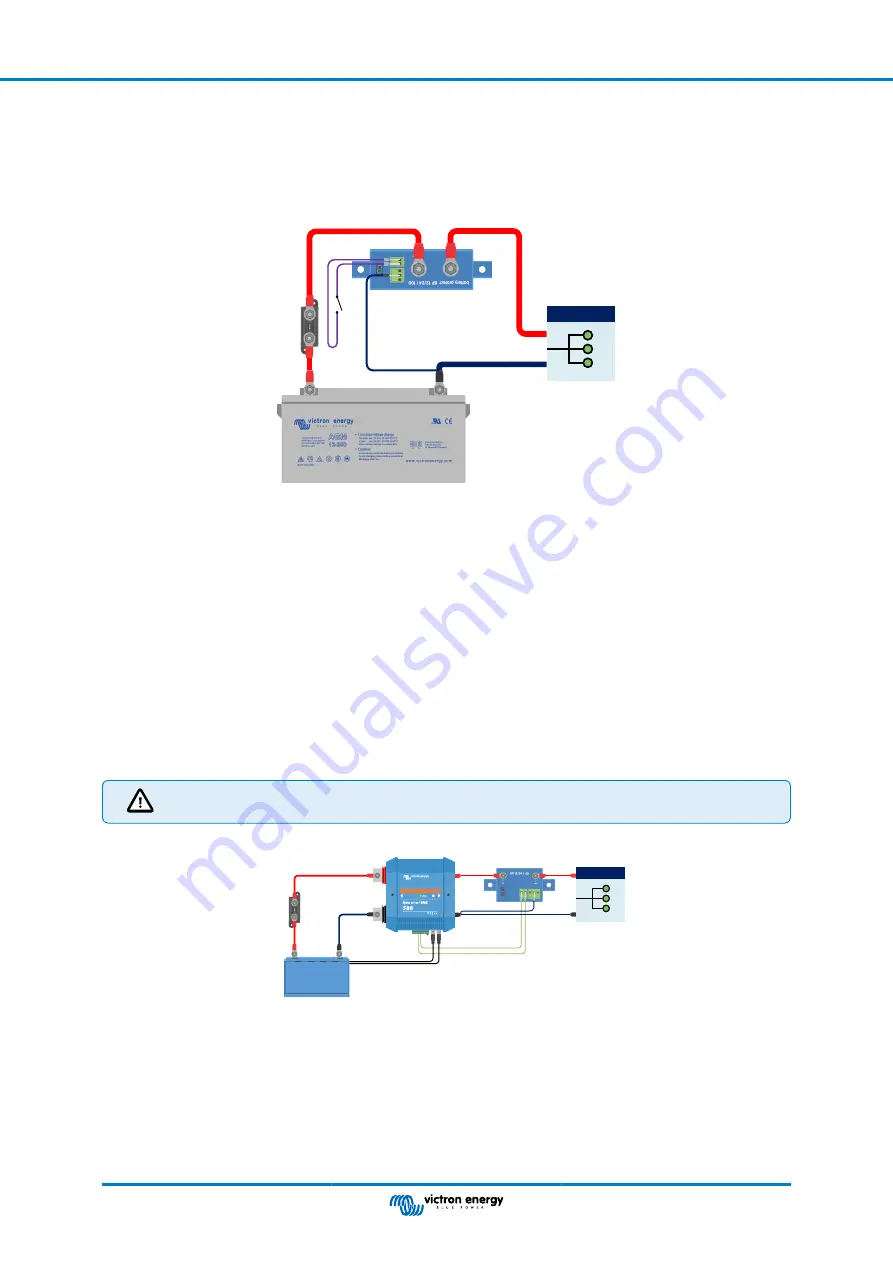
3.3.2. BatteryProtect remote on/off switch
The below example shows a BatteryProtect in a simple system with a remote on/off switch wired to the remote terminals.
This switch can be used, for example, to turn the system remotely on and off. The power consumption of the BatteryProtect is
negligible at less than 1mA when switched off (check the
Specifications chapter
).
DC loads
System
on/off
switch
BatteryProtect with remote on/off switch
3.3.3. BatteryProtect in a lithium battery system with external BMS
The image below shows a BatteryProtect in a lithium battery system with external BMS. The external BMS (
in this example) has an ATD (allowed to discharge) and ATC (allowed to charge) output. Designed as a dry contact, ATD
and ATC function as a switch that directly controls the BP via its remote terminal.
For this, the BatteryProtect must be programmed to Li-ion mode.
The dry contact is wired between the L and H connectors of the remote terminal.
If, for example, ATD opens in the event of a lithium battery cell undervoltage, the BP will immediately disconnect the load without
delay.
The BP will remain disengaged for 30 seconds, even if ATD closes within this period. After this 30 seconds, it responds
immediately and connects the load to the battery.
Please note that the under voltage thresholds and alarm output of the BP are inactive in this mode.
If you have a lithium battery with internal BMS (so-called drop-ins) that does not have an output for controlling
loads or chargers, the BP must be programmed in mode A or B. Mode C is not applicable in this case.
DC loads
BMS cables
ATD (allowed to discharge)
Lynx Smart BMS
Fuse
BP-65
BatteryProtect in Li-ion mode controlled by ATD from a Lynx Smart BMS
BatteryProtect 12/24V
Page 6
Installation and wiring examples

































